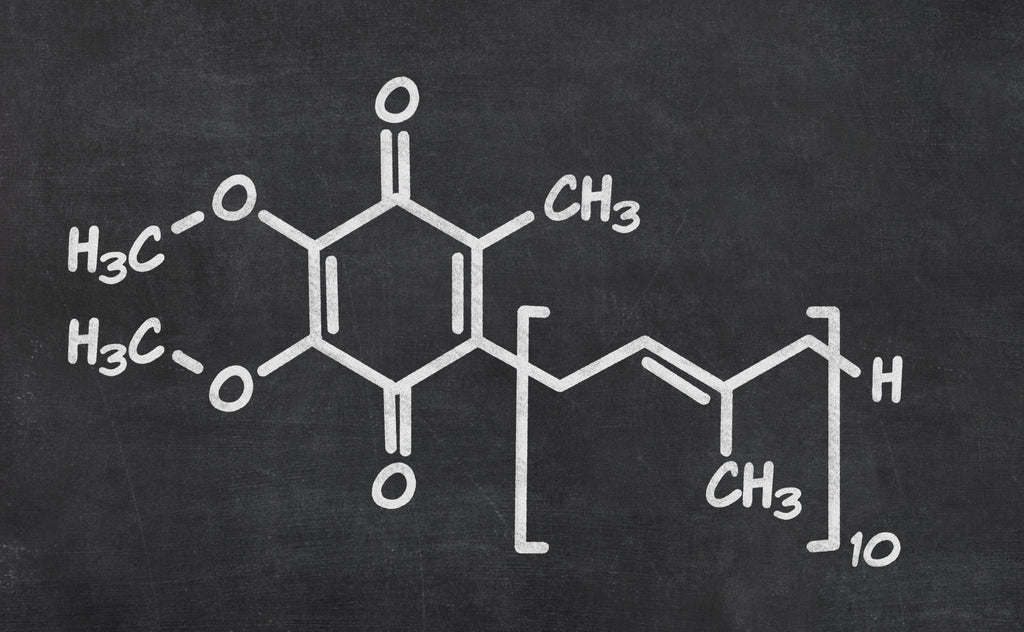Ingredient Fact File: CoEnzyme Q10
8th February 2019 / Ingredients
Ingredient Fact File: CoEnzyme Q10
Bold Commerce Collaborator

Over 1 in 5 of us in the UK complain of unexplained tiredness and fatigue and doctors even report that one of the most common reasons for going to see the GP is for help with our energy levels. 21st century life and its daily demands mean that there isn’t really time to stop and recharge and the need for a sustainable, effective boost in energy levels has never been so apparent. This is where our friend CoEnzyme Q10 comes in… a vitally important nutrient that every cell in our body needs in order to produce energy.
As its name suggests, CoEnzyme Q10 is a coenzyme molecule naturally found in all animals and some bacteria. Not to be mistaken with an enzyme, a coenzyme can be defined as a “non-protein compound necessary for the functioning of an enzyme”. In other words, without the presence of CoEnzyme Q10, or CoQ10 for short, an essential process that occurs in our cells would not be able to happen.
What essential process is CoQ10 involved in?
CoQ10 is the fat-soluble, vitamin-like substance involved in the energy-producing respiration process of all cells in the body with a nucleus, these are known as eukaryotic cells. CoQ10 can mainly be found in the cell mitochondria; the powerhouse organelles of the cell. The mitochondria are where the electron transport chain reaction takes place and energy in the form of ATP (adenosine triphosphate) is produced from oxygen and glucose. Being fat-soluble, CoQ10 is able to move freely within the cellular membrane and performs a key role in the cell’s energy producing process.
CoQ10 has three redox (reduction and oxidation) states ranging from fully oxidised (electron acceptor) ubiquinone, semiquinone and the fully reduced (electron donor) ubiquinol. The CoQ10 molecule is unique in its ability to act as “a mobile messenger” between the various enzymes of the electron transport chain. Each and every pair of electrons involved in the chain must first be activated by the CoQ10, this interaction provides the “spark” needed for the electrons to progress through the transport chain and eventually produce the energy for the cell.
There is no other substance that can perform the role of CoQ10; without sufficient levels of CoQ10 the cell’s energy production is seriously hindered and overall energy levels can become compromised.
CoQ10 as an antioxidant
CoQ10 also plays a vital role as a natural antioxidant. Defined as substances that inhibit oxidation and have the ability to remove potentially damaging oxidising agents, antioxidants can protect from various sources of oxidation related damage, most commonly caused by the presence of electron-scavenging free radicals.
Due to the primary function of CoQ10 as an electron carrier it is constantly going through a redox cycle whereby it can easily gain and lose electrons (reduction and oxidation). This means that when it comes into contact with a free radical (a very unstable molecule looking for free electrons), CoQ10 can easily donate one or both of its free electrons to stabilise the free radical and prevent oxidative damage. You can find out more about antioxidants and why they’re so important in the body by clicking here.
So, how can we get CoQ10 into our bodies?
The body is able to biosynthesise CoQ10 itself from raw nutrients taken in from the food in our diets. CoQ10-rich foods include organ meats such as liver and kidney, fatty fish like mackerel and sardines and some vegetables like spinach and cauliflower. The levels of CoQ10 present in these foods, however, are quite low and you would need to eat a lot of them to take in enough CoQ10 to make an impact on your energy production. Furthermore, the body’s ability to produce CoQ10 gradually declines with age leading to less abundant and less effective cellular energy production.
A convenient and effective way of getting more CoQ10 into your body is through supplementation. CoQ10 supplements can give you the coenzyme boost your body needs for optimal electron transport chain-based ATP (energy) production and subsequent optimal levels of energy.
From The Blog
-

1st March 2022 / Health / Ingredients
Benefits of Boswellia for joint health
Boswellia might just be the best kept secret for supporting long term joint health, want to find out some of the key benefits of Boswellia? Look no further, let's delve right in! Boswellia is a sp...
Read article -

1st March 2022 / Health / Ingredients
Why magnesium is the wonder mineral for performance
Magnesium is probably one of the most important nutrients for feeling your best every day, yet it’s not talked about often enough. It’s commonly deficient in our diets, with a 2018 study finding th...
Read article -

19th March 2021 / Health / Ingredients
What is hyaluronic acid?
Hyaluronic acid is something of a buzz word when it comes to skin. You’ll find it in skin creams, serums and masks but what actually is it, and how is it good for your skin? We’ve included this mir...
Read article




